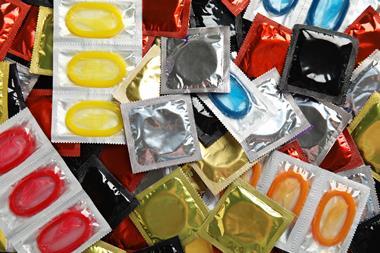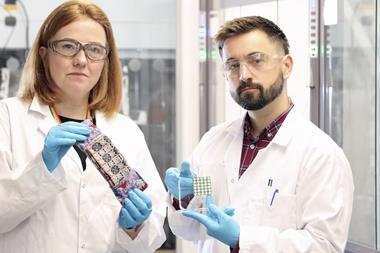Vermont has become the first state in the US to ban multiple chemicals from menstrual products such as tampons and sanitary pads. The chemicals banned include per- and polyfluoroalkyl substances (PFAS), phthalates, formaldehyde, 1,4-dioxane and mercury. The law is set to come into force in January 2026.

‘I support the action of state governments, such as Vermont, to begin the process of identifying uses of PFAS that are not essential,’ Jamie DeWitt, a toxicologist at Oregon State University who has studied the immunotoxicological effects of PFAS, tells Chemistry World. ‘While I do not know of any studies that have been conducted to look at how much of the PFAS reported to be in certain consumer items, such as menstrual products, can get into the bodies of people who use them, the use of PFAS in these products does contribute to human exposure.’
Sally Gaw, the director of environmental science at the University of Canterbury’s physical and chemical sciences school in New Zealand, welcomed the move to regulate hazardous chemicals in everyday consumer products. She says there is limited regulatory oversight of the hazardous chemicals used in the manufacture of everyday products, including menstrual products and clothing. ‘Regulating hazardous chemicals in everyday products will benefit the communities and ecosystems where the consumer products are made, the users of the products and the receiving environments when the products are disposed of,’ Gaw states.
Legislation recently introduced in California proposes a 10ppm maximum threshold for PFAS for all menstrual products by 2027. The bill, introduced in March, is currently under consideration. Beyond PFAS limits, it also mandates that the California Department of Toxic Substances Control collaborate with stakeholders to evaluate chemical alternatives to PFAS that are safer and make that information publicly available.
Similar legislation was rejected by California Governor Gavin Newsom last year due to concerns about a lack of regulatory oversight. ‘Previously enacted single-product chemical bans, which also lack oversight, are proving challenging to implement, with inconsistent interpretations and confusion among manufacturers about how to comply with the restrictions,’ he stated at the time.
Phasing out PFAS elsewhere
Other US states are also taking steps to phase out PFAS in products and replace them with safer alternatives. Colorado, Maine and Minnesota have enacted their own legislation to phase out PFAS in menstrual products, according to a national alliance of environmental health organisations called Safer States.
Maine, Minnesota and Washington state legislatures have given state agencies the authority to ban PFAS in a wide range of products, and seven states – including those three as well as California, Colorado, Maryland and Oregon – are taking action to eliminate PFAS in cosmetics.
Washington state has just finalised regulatory actions to restrict PFAS in consumer products. The Washington state Department of Ecology has identified safer alternatives to PFAS in clothing and cleaning products, and it will be moving forward with regulations to ban PFAS in these two product categories.
The agency is also proposing that companies disclose and report the use of PFAS in other products, including personal protective equipment, floor and ski waxes, and shoes.
‘It is encouraging to see many states taking the lead in banning PFAS from a variety of products. We need to stop the use of all PFAS unless absolutely essential,’ states Linda Birnbaum, a toxicologist and microbiologist who formerly headed the US National Institute of Environmental Health Sciences and the National Toxicology Program.
The EU is currently considering a ban on all PFAS in consumer products except for essential use.

















1 Reader's comment